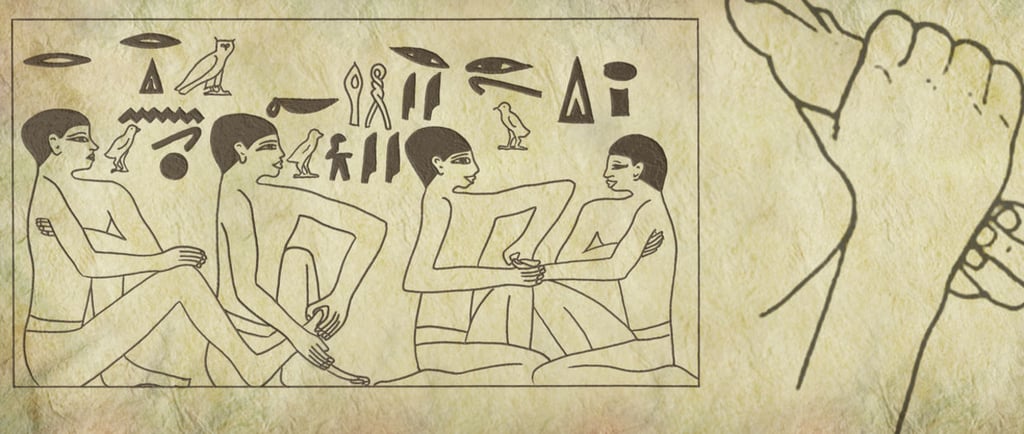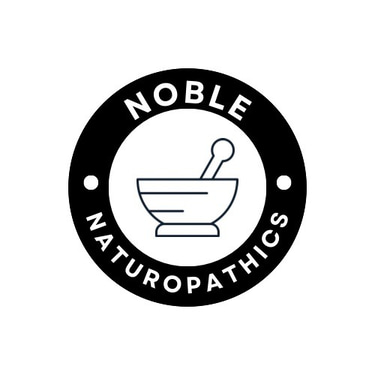The Ancient Egyptian Contributions to Reflexology and Medicine
Reflexology, a therapeutic practice involving the application of pressure to specific points on the feet and hands, has deep historical roots in ancient Egypt. The most compelling evidence of its ancient practice is found in the tomb of the physician Ankhmahor at Saqqara, dating back to 2330 BCE. This tomb, often referred to as the "Tomb of the Physician," contains inscriptions and depictions that offer a fascinating glimpse into the early use of reflexology.
5/17/20243 min read


Reflexology in Ancient Egypt
Reflexology, a therapeutic practice involving the application of pressure to specific points on the feet and hands, has deep historical roots in ancient Egypt. The most compelling evidence of its ancient practice is found in the tomb of the physician Ankhmahor at Saqqara, dating back to 2330 BCE. This tomb, often referred to as the "Tomb of the Physician," contains inscriptions and depictions that offer a fascinating glimpse into the early use of reflexology.
One notable scene from the tomb shows practitioners applying pressure to the feet and hands of patients. The accompanying inscriptions are particularly revealing. A patient is depicted saying, "Don’t hurt me," to which the practitioner responds, "I shall act so you praise me." These inscriptions suggest a nuanced understanding of pain management and patient care, emphasizing the importance of achieving therapeutic outcomes without causing discomfort. This interaction underscores the sophistication of ancient Egyptian medical practices and their emphasis on patient satisfaction.
The practice of reflexology in ancient Egypt was likely integrated into broader medical and healing traditions. Physicians and healers of the time believed in the interconnectedness of the body and the influence of specific pressure points on overall health. Reflexology was perceived not only as a method for relieving pain but also as a means to promote general well-being. The depictions in Ankhmahor’s tomb suggest that such therapeutic techniques were valued and possibly reserved for the elite, indicating their significance within society.
The level of detail in these inscriptions highlights the advanced understanding that ancient Egyptians had regarding therapeutic techniques. Reflexology was seen as a legitimate part of their medical practices, reflecting a holistic approach to health that considered both physical and emotional well-being. By studying these ancient practices, modern reflexology can trace its origins and appreciate the historical context that shaped its development.
Egyptian Advances in Science and Medicine
In the annals of history, ancient Egypt stands out as a pivotal point in the evolution of science and medicine. Before their time, treatments for diseases were primarily rooted in mysticism, with witchcraft and rituals being the main methods to expel evil spirits believed to cause illness. The Egyptians, however, initiated a paradigm shift towards a more empirical and scientific approach to understanding the human body.
One of the most remarkable contributions of ancient Egyptians to medicine was their study of the brain. They were among the first civilizations to recognize the brain's complex structure, moving beyond the simplistic views held by earlier societies. Their observations and documentation laid foundational knowledge that would be built upon by future scholars. Additionally, their understanding of the circulatory system was notably advanced for their time. The significance of the pulse in relation to the heart and blood flow was recognized, indicating a sophisticated comprehension of human physiology.
The Egyptians developed a wide array of medical tools and methods that were groundbreaking. They utilized surgical instruments made from copper and bronze, and there is evidence of surgical procedures, such as trepanation, being performed to treat head injuries and other ailments. Their pharmacopoeia was extensive, with numerous herbal remedies documented in medical papyri like the Ebers Papyrus. This ancient text, dating back to around 1550 BCE, is one of the oldest medical documents, detailing treatments for various diseases and conditions.
The impact of these ancient methods on future medical practices cannot be overstated. The Egyptians' meticulous record-keeping and systematic approach to medicine provided a valuable reference for subsequent civilizations, including the Greeks and Romans, who further refined and expanded upon these early practices. The legacy of Egyptian medicine is evident in modern medical practices, where the emphasis on observation, documentation, and empirical study continues to be paramount.
Today, the influence of ancient Egyptian contributions to science and medicine is still apparent. Their pioneering work laid the groundwork for many aspects of contemporary medical knowledge and practice, serving as a testament to their ingenuity and the enduring relevance of their discoveries.
